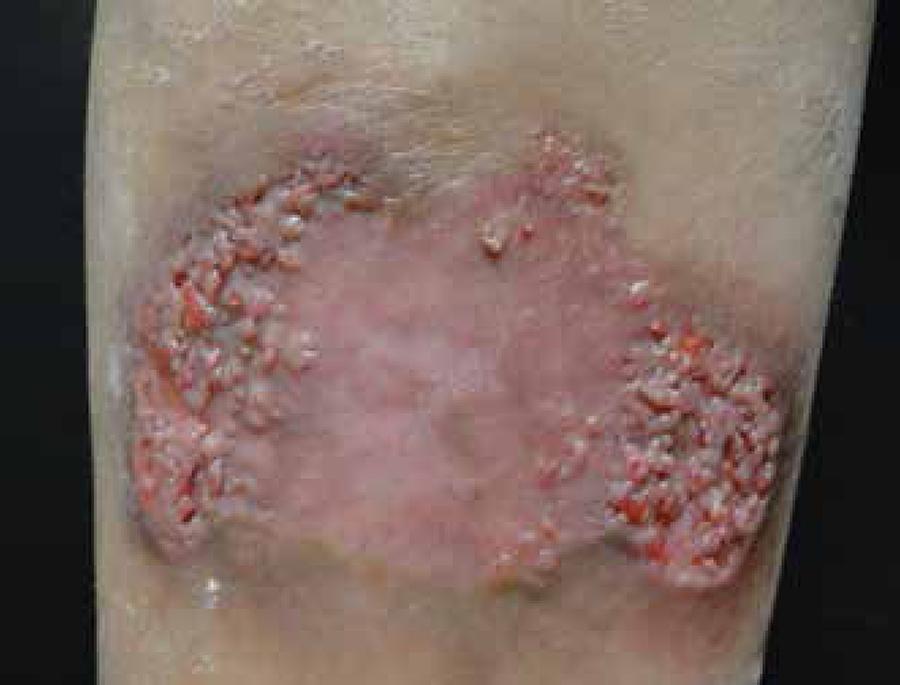Coccidioidomycosis – its two species of fungi, Coccidioides immitis and Coccidioides posadasii, cause coccidioidomycosis also called Valley Fever.
Both are dimorphic (having mycelial and spore phases when viewed microscopically) and almost always are acquired through the respiratory tract (by inhalation).
When viewed microscopically, the mycelial form found in the soil has arthroconidia (barrel-shaped asexual spores) attached to non-spore-forming rectangular mycelium cells, usually alternating in a line.
Once someone inhales the arthroconidia, the fungus develops into 30–60-micron diameter structures called spherules that are filled with 3–5-micron diameter endospores.
The large spherules then release the endospores that continue the infection; microscopic identification of these endospores in pus or tissue confirms the diagnosis.
Valley fever is not contagious person to person. People only become infected when they inhale arthroconidia (spores) of Coccidioides that settle in the lungs.
Spores are easily dispersed and become airborne mixed with dust, especially on dusty, windy days and in areas where soil has been recently disturbed by construction or similar actions.
Symptoms and signs of coccidioidomycosis
About 60% of all infected patients (without immunosuppression) have no symptoms. About 30%-35% of patients develop symptoms like flu-like symptoms (fever, cough, malaise, and chills) that resolve over (radiate into inner organs – said Dr Qaisar Ahmed MD, DHMS) about two to six weeks without treatment.
Some patients may develop additional symptoms such as shortness of breath, night sweats, headaches, sputum production, and joint and muscle pains (symptoms resembling pneumonia).
Women, more often than men, may develop erythema nodosum (reddish, painful, tender lumps, usually on the legs) or erythema multiforme (an allergic reaction similar to erythema nodosum in multiple body sites with rash).
“Desert rheumatism.” refers to the combination of fever, erythema nodosum, and migratory joint pains. Usually these symptoms resolve (radiates to other organs) in about two to six weeks.
Chronic coccidioidomycosis occurs in about 8% of patients and may spread from the lungs to other parts of the body. Patients develop lung cavities that may disappear in about two years or become calcified.
Progressive pulmonary coccidioidomycosis includes the above symptoms but progresses to lung volume loss, fibrosis (scarring), and inflammation, considered serious complications of the disease.
Disseminated coccidioidomycosis (about 1% of cases) can be characterized by the above symptoms, but they may occur over weeks to years and can be life threatening. The fungi live in any organ system but are most frequently seen in the skin, meninges, spinal cord, and bones.
In a few individuals, the disease is rapidly fatal. Disseminated disease occurs most often in immunosuppressed individuals, males, and pregnant females.
Diagnosis 
Early in the Coccidioidomycosis affection, the diagnosis is difficult because the symptoms may be mild that don’t initiate any tests. Accurate diagnosis of coccidioidomycosis is important because there are many diseases that have similar initial symptoms and may occur in areas of the world where coccidioidomycosis occurs; for example, Andes virus (caused by a hantavirus), arbovirus encephalitis (caused by six different viruses), Argentine hemorrhagic fever (an arenavirus infection caused by Junin virus), cryptococcosis (caused by Cryptococcus neoformans, a fungal species) etc.
A confirmatory diagnostic test is easily done by microscopic examination of sputum or a tissue biopsy. The biopsy shows characteristic fungal spherules and endospores of Coccidioidomycosis (Coccidioides immitis or Coccidioides posadasii).
These fungi can also be identified after they are cultured on fungal media (growth takes about five days). Additionally, there are several serum tests and a PCR test (to detect the genetic material of the fungus).
High blood levels of IgG (an immunoglobulin) that react with the fungi can help determine the extent of the disease. Skin tests can determine if the patient has been exposed to the fungi, but the test is not very specific or sensitive.
Other tests help determine the extent of the Coccidioidomycosis. The most frequent test is a chest X-ray to identify abnormalities in the lungs. Physicians may order MRI and CT scans to examine a patient’s brain or other organs (especially bone) to see if they’re involved.
Bone scans also help to determine the presence of bone involvement. Other routine blood tests such as a CBC (complete blood count) and ESR (erythrocyte sedimentation rate, a marker of inflammation) test.
Occasionally, the diagnosis may require obtaining samples of tissue or tissue fluid, so lumbar puncture, bronchoscopy, and surgical or needle biopsy may be done.
Allopathic treatment for coccidioidomycosis
According to allopathic theory, the majority of Coccidioidomycosis cases (over 60%) spontaneously resolves and requires no treatment (which is in my opinion – very not responsible, said Dr Qaisar Ahmed MD, DHMS, Isl. Juri).
There are several antifungal allopathic drugs available to treat coccidioidomycosis. The drug of choice is usually amphotericin B, but oral azoles (fluconazole, itraconazole, and ketoconazole, posaconazole and voriconazole {posaconazole & voriconazole are often used “off label,”- meaning they are experimenting on patients}).
All of these drugs have severe side effects and have not been proven safe to use in pregnant patients.
High relapse rates can occur with some patients (about 75% relapse with brain involvement), requiring lifelong antifungal therapy (allopathic therapy).
Sometimes a patient may need surgical treatment. Pulmonary cavities, persistent pulmonary infection, empyema (pus collection), and shunt placement are some of the surgical interventions used to treat this disease.
Other treatments for example, prednisone is not currently recommended by most allopathic physicians.
Alternative therapy such as Homeopathic and dietary modification or both, are strictly recommended for all coccidioidomycosis patients, because in Homeopathy treatment for Coccidioidomycosis is very effective, short term and absolutely harmless for patients with low immunity and pregnant.
Homeopathic Treatment for Coccidioidomycosis
According to Homeopathic theory, all coccidioidomycosis cases could be harmful in future if not treated or not properly treated or not intime treatment. High relapse rates (about 75% relapse with brain involvement), could be easily treated with Homeopathic antifungal therapy.
There are many antifungal Homeopathic medicines available to treat coccidioidomycosis; here are very few of them:
Mercurius Solubilis 
Every organ and tissue of the body is more or less affected by this powerful medicine. The lymphatic system is especially affected with all the membranes and glands, and internal organs, bones etc. Hereditary syphilis manifestations are within its range, bullae, abscesses, snuffles, marasmus, stomatitis or destructive inflammations. Tremors everywhere. Weakness with ebullitions and trembling from least exertion. Breath, excretions and body smell foul. Tendency to formation of pus. ENT – allergies and/or infections. Lower respiratory tract infections. Skin diseases, allergies and/or infections, excessive odorous viscid perspiration. Vesicular and pustular eruptions. Ulcers, irregular in shape, edges undefined. Pimples around the main eruption. Indigestion. Urinary tract and reproductive system infection. Pains in different joints, muscular pains; Dropsies.
Mezereum
Skin infections – Eczema; intolerable itching; chilliness with pruritus; Ulcers itch and burn, surrounded by vesicles and shining, fiery-red areola. Zona, with burning pain. Bones, especially long bones, inflamed and swollen, caries, exostosis. Affections of bones, and neuralgias most important, especially about teeth and face. Bruised, weary feeling in joints, with drawing and stiffness. Pains of various kinds, with chilliness and sensitiveness to cold air. Bone pains. Eruptions after vaccination. Burning, darting sensation in the muscles; subsultus tendinum. Pains shoot upward and seem to draw patient up out of bed. Semi-lateral complaints. Patient is very sensitive to cold air. Allergic rhinitis. Soreness in thorax. Cough. Croup.
Swelling of glands especially in abdomen, and respiratory tract. Muscular pain. Bones especially long bones inflamed and swollen, caries, exostosis. Skin infections, eczema etc.
Syphilinum
Aphonia; chronic asthma in summer, wheezing and rattling. Cough dry, hard; worse at night; windpipe sensitive to touch. Lancinating pains from base of heart to apex. Skin reddish-brown eruption, with a disagreeable odor. Extreme emaciation. Severe pain in long bones. Redness and rawness between toes. Rheumatism. Indolent ulcers. Muscles contracted in hard knots.
Kalium Muriaticum
Kalium Muriaticum is of great value in catarrhal affections, in sub-acute inflammatory states, fibrinous exudates, and glandular swellings. White or gray coating of base of tongue, and expectoration of thick, white phlegm, seem to be special guiding symptoms. Bursitis prepatellar. Eye infections, corneal opacities. Mastoid gland inflammation. Follicular tonsillitis. Indigestion.
Acne, erythema, and eczema, with vesicles containing thick, white contents. Dry, flour-like scales on the skin. Bursitis.
Asthma, with gastric derangements; mucus white and hard to cough up. Loud, noisy stomach cough; cough short, acute, and spasmodic, like whooping-cough; expectoration thick and white. Rattling sounds of air passing through thick, tenacious mucus in the bronchi; difficult to cough up.
Rheumatic fever; exudation and swelling around the joints. Rheumatic pains felt only during motion or increased by it. Nightly rheumatic pains; worse from warmth of bed; lightning-like from small of back to feet; must get out of bed and sit up. Hands get stiff.
Belladonna
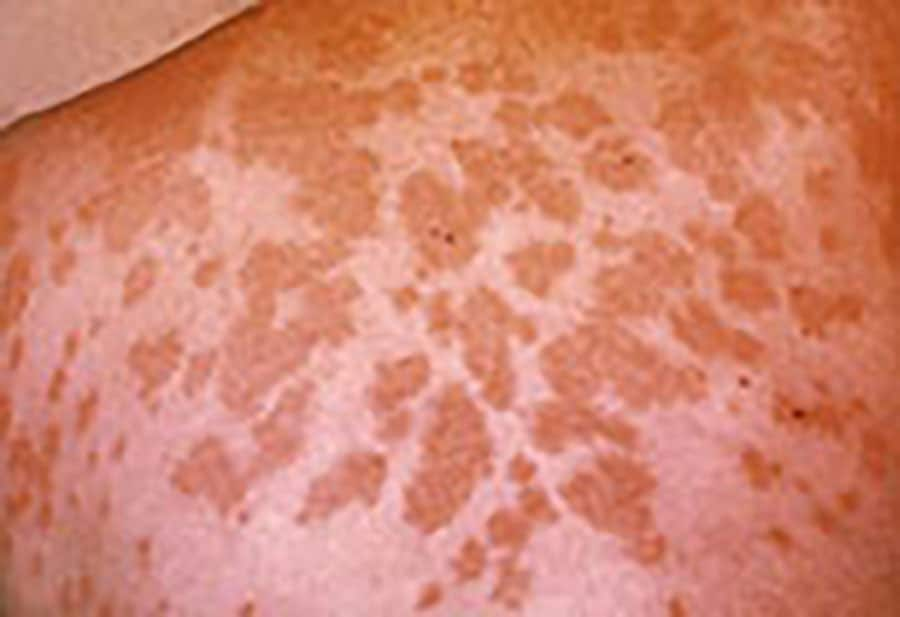
Belladonna acts upon every part of the nervous system. Active congestion, furious excitement, perverted special senses, twitching, convulsions and pain. It has a marked action on the vascular system, skin and glands. Hot, red skin, flushed face, glaring eyes, throbbing carotids, excited mental state, hyperesthesia of all senses, delirium, restless sleep, convulsive movements, dryness of mouth and throat with aversion to water, neuralgic pains that come and go suddenly.
Epileptic spasms followed by nausea and vomiting. Scarlet fever and also prophylactic. Exophthalmic goiter. Airsickness” in aviators. No thirst, anxiety or fear. Belladonna stands for violence of attack and suddenness of onset. Extreme of thyroid toxemia. Croup. Barking cough, whooping cough.
Shooting pains along limbs. Joints swollen, red, shining, with red streaks radiating. Tottering gait. Shifting rheumatic pains. Phlegmasia alba dolens. Jerking limbs. Spasms. Involuntary limping. Cold extremities.
Skin dry and hot; swollen, sensitive; burns scarlet, smooth. Eruption like scarlatina, suddenly spreading. Erythema; pustules on face. Glands swollen, tender, red. Boils. Acne rosacea. Suppurative wounds. Alternate redness and paleness of the skin. Indurations after inflammations. Erysipelas.
Gelsemium
Paralysis of various groups of muscles about the eyes, throat, chest, larynx, sphincter, extremities, etc. Post-diphtheritic paralysis. Muscular weakness. Complete relaxation and prostration, complete relaxation of the whole muscular system. Lack of muscular coordination. Itching and tickling in soft palate and nasopharynx. Sternocleidomastoid, back of parotid. Tonsillitis – rough and burning. Post-diphtheritic paralysis. Excessive trembling and weakness of all limbs. Hysteric convulsions.
Feeling of a lump in throat that cannot be swallowed. Slowness of breathing. Aphonia. Acute bronchitis, respiration quickened, spasmodic affections of lungs and diaphragm. Skin hot, dry, itching, measle-like eruption. Erysipelas. Measles.
Drosera Rotundfolia
Effects markedly the respiratory organs. Whooping-cough. Tuberculosis. Laryngeal phthisis. Phthisis pulmonal; vomiting of food from coughing with gastric irritation and profuse expectoration. Pains about hip joint. Tubercular glands. Spasmodic, dry irritative cough – can scarcely breathe.
Paralytic pains in the coxofemoral joint and thighs. Stiffness in joints of feet. All limbs feel lame. Bed feels too hard.
Bryonia Alba
Acts on all serous membranes and the viscera they contain. Aching in every muscle. Dry, hacking cough, frequent desire to take a long breath; must expand lungs. Difficult, quick respiration. Croup. Pleuro-pneumonia. Expectoration brick shade, tough, and falls like lumps of jelly. Painful muscle stiffness. Knees stiff and painful. Hot swelling of feet. Joints red, swollen, hot, with stitches and tearing.
Rhus Toxicodendron
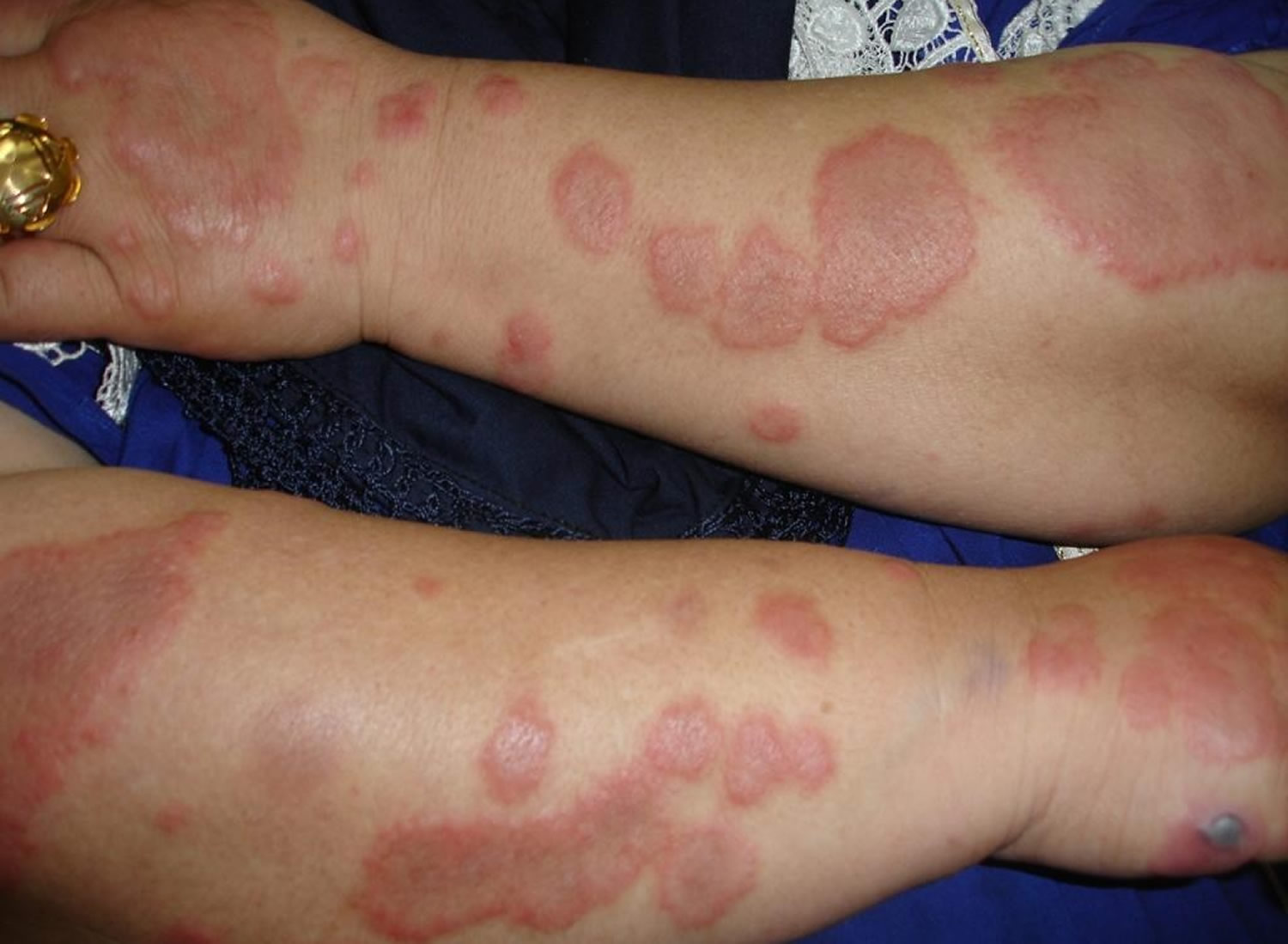
Skin infections, rheumatic pains, mucous membrane affections, typhoid fever. Affects fibrous tissue markedly-joints, tendons, sheaths-aponeurosis, etc – pains and stiffness. Post-operative complications. Tearing asunder pains. Septic conditions. Cellulitis and infections, carbuncles in early stages. Rheumatism in winter. Septicemia. ENT infections. Dry teasing nocturnal cough. Lumbago. Spine hot.
Skin red, swollen; itching intense. Vesicles, herpes; urticaria; pemphigus; erysipelas; vesicular suppurative forms. Glands swollen. Cellulitis. Burning eczematous eruptions with tendency to scale formation.
Hot, painful swelling of joints. Pains tearing in tendons, ligaments, and fasciae. Rheumatic pains spread over a large surface at nape of neck, loins, and extremities. Soreness of condyles of bones. Limbs stiff paralyzed. Pain along ulnar nerve. Tearing down thighs. Sciatica.
Silicea Tera
Diseases of bones, caries and necrosis. Organic changes. Periodical states; abscesses, quinsy, headaches, spasms, epilepsy, feeling of coldness before an attack. Keloid growth. Great sensitiveness to taking cold. Swelling of lacrimal duct, photophobia. Fetid ear discharge. Caries of mastoid. Tonsillitis. Parotid glands swollen. Slow recovery after pneumonia.
Sciatica, pains through hips, legs and feet. Cramp in calves and soles. Loss of power in legs. Tremulous hands when using them. Paralytic weakness of forearm. Skin infections. Fever chilliness; very sensitive to cold air. Creeping, shivering.
Spongia Tosta
A remedy especially marked in the symptoms of the respiratory organs, cough, croup, etc. Heart affections and often indicated for the tubercular diathesis. Great dryness of all air-passages. Hoarseness: larynx dry, burns, constricted. Cough, dry, barking, croupy; larynx sensitive to touch. Croup; worse, during inspiration and before midnight. Respiration short, panting, difficult; feeling of a plug-in larynx. Chest weak; can scarcely talk. Laryngeal phthisis. Goiter, with suffocative spells. Swelling and induration of glands. Temperatures.
Natrum Muriaticum
Great debility: most weakness felt in the morning in bed. Coldness. Emaciation most notable in neck. Great liability to take cold. Dry mucous membranes. Violent, fluent coryza. Constrictive sensation throughout the body. Great weakness and weariness. Oversensitive to all sorts of influences. Hyperthyroidism. Goiter. Addison’s disease. Diabetes. Weak muscles. Skin infection, skin allergies. Temperature, fever-blisters.
Carbo Vegetabilis
Otorrhea. Eczema scalp – Hair loss. ENT inflammations. Indigestion. Rectal bleeding. Spasmodic cough. Whooping cough. Pneumonia. Extremities heavy, stiff; feel paralyzed; limbs, go to sleep; want of muscular energy; joints weak. Hectic fever, exhausting. Moist skin; hot perspiration; senile gangrene beginning in toes sweats. Varicose ulcers, carbuncles.
Phosphorus
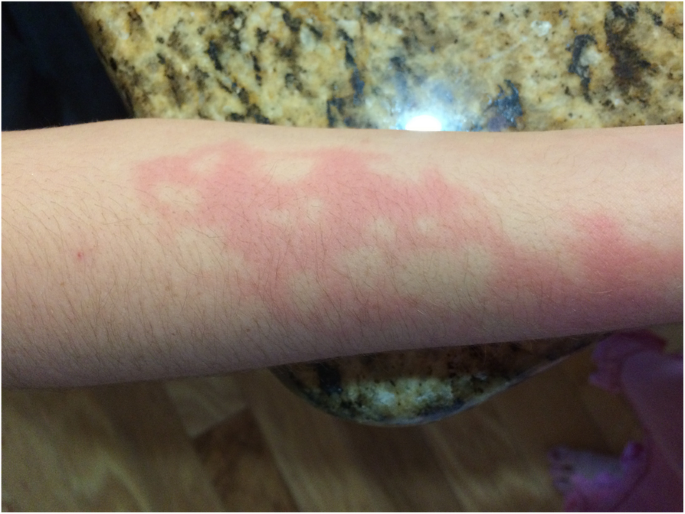
Irritation inflamed and degenerated mucous membranes, serous membranes. inflame spinal cord and nerves, causing paralysis, destroys bone. Fatty degeneration of blood vessels and every tissue and organ of the body. Hemorrhages, and hematogenous jaundice. Causes yellow atrophy of the liver and sub-acute hepatitis. Destructive metabolism. Suddenness of symptoms, sudden prostration, faints, sweats, shooting pains. Blood extravasations; fatty degenerations, cirrhosis, caries.
Congestion of lungs. Burning pains, heat and oppression of chest. Tightness across chest. Sharp stitches in chest; respiration quickened, oppressed. Much heat in chest. Pneumonia, with oppression. Whole body trembles, with cough. Sputa rusty, blood-colored, or purulent. Tuberculosis in tall, rapidly growing young people.
Burning in back; pain as if broken. Heat between the shoulder. Ascending sensory and motor paralysis from ends of fingers and toes. Stitches in elbow and shoulder joints. Burning of feet. Weakness and trembling, from every exertion.
Arsenic Album
A profoundly acting remedy on every organ and tissue. Its deep acting quality in severe and too many types of disease make its homeopathic employment constant and certain.
ENT infections. ENT allergies. Diphtheria. Indigestion. Liver diseases. Gallbladder diseases. Spleen diseases. Food allergies. Intestinal diseases/infections. Urinary tract infections, tumors etc. Reproductive organs diseases, tumors, cancers etc. Respiratory tract infections (croup, bronchitis, pneumonia, corona etc), allergies (asthma, hay fever, fumes/gases and or chemicals etc), tumors, cancers etc. Extremities pains, weakness. Muscular weakness/ Joints infections, inflammations etc. Different types of fevers (infections, sepsis, malaria, dengue, typhoid etc). Skin infections, allergies, STDs etc.
Antimonium Tartaricum
Its therapeutic application has been confined largely to the treatment of respiratory diseases, rattling of mucus, short and difficult breathing. Pulmonary edema. Cholera morbus. Dysuria, strangury, hematuria, albuminuria, catarrh of bladder and urethra, burning in rectum, bloody mucous stools, etc. Eating disorders/infections. Liver infections. Gallbladder diseases. Spleen diseases. Muscular pains. Intermittent fevers.
Hepar Sulphur
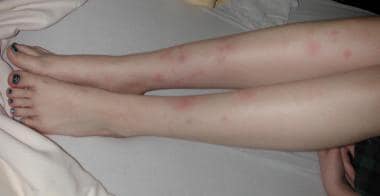
Suits especially scrofulous and lymphatic constitutions who are inclined to have eruptions and glandular swellings. Sweating patient pulling blanket around him. Respiratory mucous membrane – croupous catarrhal inflammation, anxious wheezing, moist breathing, asthma worse in dry cold air; better in damp. Palpitation of heart {cardiac asthma}, profuse secretion; and easy perspiration. Chilliness, hypersensitiveness, splinter-like pains, craving for sour and strong food/drinks. ENT infections (Tonsillitis, croup, Corneal ulcers, eye infections/inflammations, otitis, rhinitis, sneezing, local/skin infections).
Thuja Occidentalis
Viral infections. Drugs reactions, vaccine reactions etc. ENT infections and neuralgias. Skin infections and ulcers, deep ulceration within the nostrils. Liver weakness and diseases, slow digestion, undigested stool. UTI (micturition etc). Sexually transmitted disease (STDs). Polypi, tubercles, warts epithelioma, naevi, carbuncles; ulcers, especially in anogenital region. Freckles and blotches. Perspiration sweetish, and strong. Dry skin, with brown spots. Zona; herpetic eruptions. Tearing pains in glands. Glandular enlargement.
Dry hacking cough with pain in pit of stomach. Stitches in chest. Asthma in children. Papilloma of larynx. Chronic laryngitis.
Numbness of lower extremities. Poor capillary blood circulation – tips of fingers swollen, red, feel read with throbbing in the blood-vessels. Muscular twitching, weakness and trembling. Cracking in joints. Pain in heels and tendo-Achilles. Nails brittle. In growing toenail.
Pulsatilla Nigra
ENT infection and allergies (infections, tumors, warts, burning neuralgias etc). Indigestion. liver weakness and diseases. Venereal diseases. Dry cough with copious expectoration, short breath with anxiety. Respiratory tract tumor. Tensive pain in extremities, joints and long bones; numbness. Severe nocturnal temperatures, chillness; apyrexial headache, diarrhea, loss of appetite, nausea.
Aconitum Napellus
Apoplexy. Asthma. Blindness, sudden. Bronchitis. Catalepsy. Dengue fever. Catheter fever. Headache. Consumption. Convulsions. Cough. Croup. Phlegmasia alba dolens. Pleurisy. Pleurodynia, Pneumonia. Cystitis. Glands swollen. Glossitis. Gonorrhea. Hemorrhages. Hemorrhoids; strangulated. Heart affections. Joints diseases. Hodgkin’s disease. Hyperpyrexia. Influenza. Jaundice.
Arnica Montana

Tinnitus aurium. Putrid phenomena. Septic conditions; prophylactic of pus infection. Apoplexy, red, full face. A muscular tonic. Traumatism of grief, remorse, depression, anxiety. Tendency to tissue degeneration, septic conditions, abscesses that do not mature. Neuralgias originating in disturbances of pneumo-gastric. Rheumatism of muscular and tendinous tissue, especially of back and shoulders. Aversion to tobacco. Influenza. Thrombosis. Hematocele.
Magnesium Phosphoricum
A best antispasmodic medicine. Cramping of muscles with radiating pains. Neuralgic pains. Alzheimer’s disease. Paralysis agitans. Cramps in calves. Sciatica; feet very tender. Darting pains. Twitching. Chorea. Goiter. Nocturnal temperatures.
P. S: This article is only for doctors having good knowledge about Homeopathy and allopathy, for learning purpose(s).
For proper consultation and treatment, please visit our clinic.
None of above-mentioned medicine(s) is/are the full/complete treatment, but just hints for treatment; every patient has his/her own constitutional medicine.
To order medicine by courier, please send your details at WhatsApp– +923119884588

Dr. Sayyad Qaisar Ahmed (MD {Ukraine}, DHMS), Abdominal Surgeries, Oncological surgeries, Gastroenterologist, Specialist Homeopathic Medicines.
Senior research officer at Dnepropetrovsk state medical academy Ukraine.
Location: Al-Haytham clinic, Umer Farooq Chowk Risalpur Sadder (0923631023, 03119884588), K.P.K, Pakistan.
Find more about Dr Sayed Qaisar Ahmed at:
https://www.youtube.com/Dr Qaisar Ahmed
https://www.facebook.com/ahmed drqaisar
